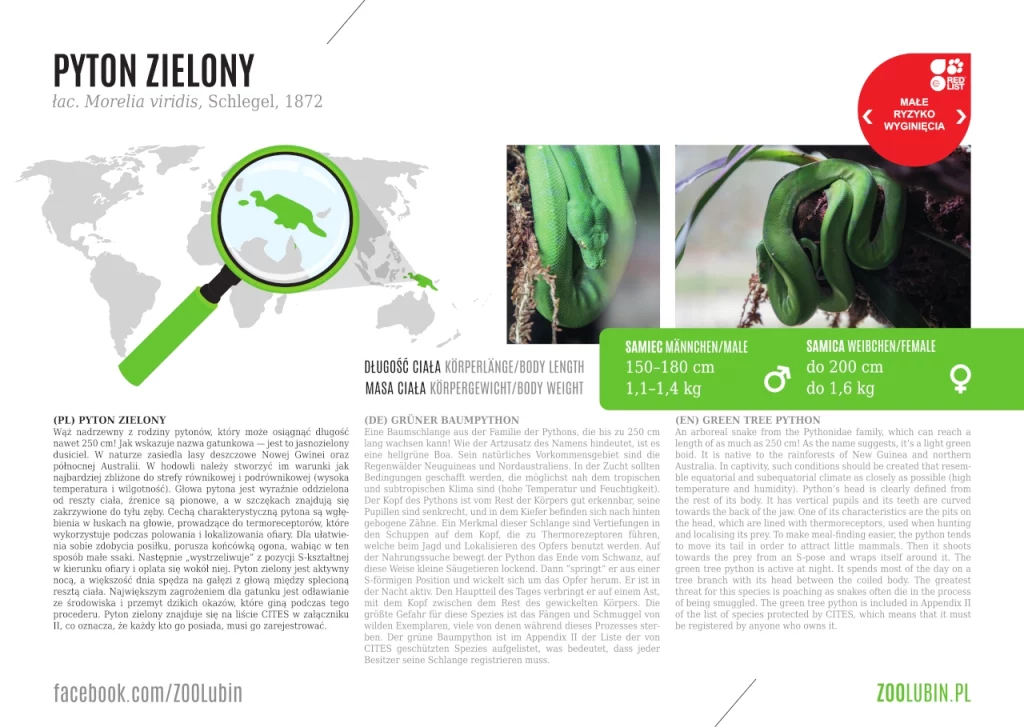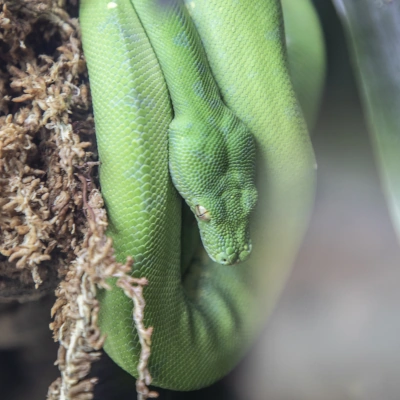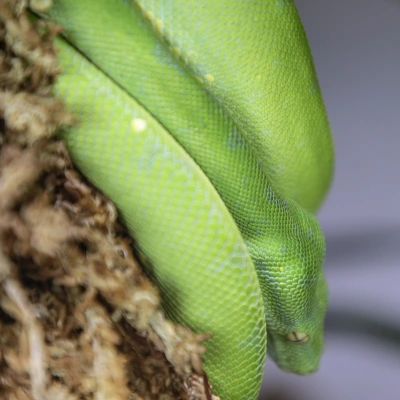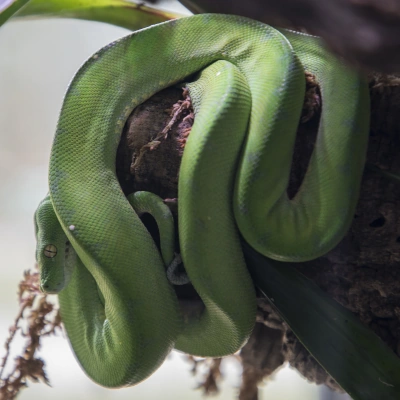
DOWNLOAD SPECIES LABEL – PDF file (size 2263 KB)
Green tree python
Morelia viridis Schlegel, 1872
An arboreal snake from the Pythonidae family, which can reach a length of as much as 250 cm! As the name suggests, it’s a light green boid. It is native to the rainforests of New Guinea and northern Australia. In captivity, such conditions should be created that resemble equatorial and subequatorial climate as closely as possible (high temperature and humidity). Python’s head is clearly defined from the rest of its body. It has vertical pupils and its teeth are curved towards the back of the jaw. One of its characteristics are the pits on the head, which are lined with thermoreceptors, used when hunting and localising its prey. To make meal-finding easier, the python tends to move its tail in order to attract little mammals. Thenit shoots towards the prey from an S-pose and wraps itself around it. The green tree python is active at night. It spends most of the day on a tree branch with its head between the coiled body. The greatest threat for this species is poaching as snakes often die in the process of being smuggled. The green tree python is included in Appendix II of the list of species protected by CITES, which means that it must be registered by anyone who owns it.
Body length:
male: 150–180 cm
female: up to 200 cm
Body weight:
male: 1100–1400 g
female: up to 1600 g



